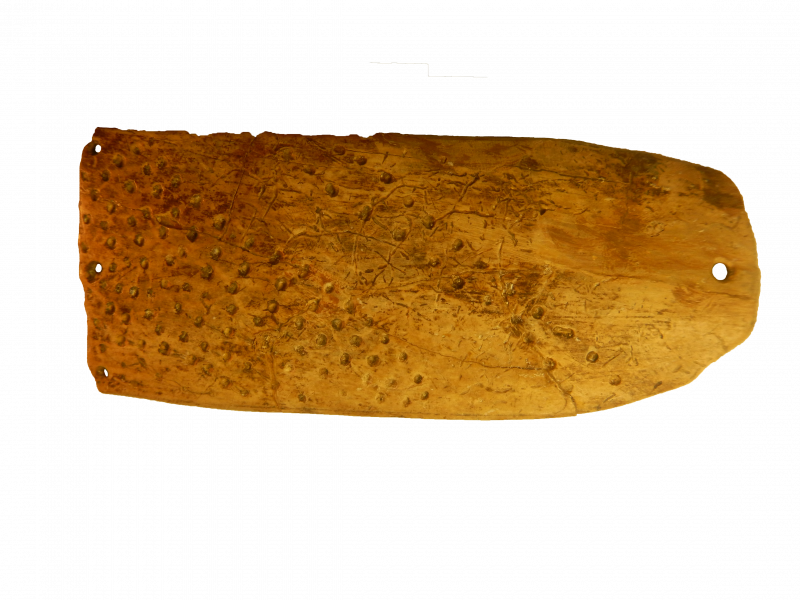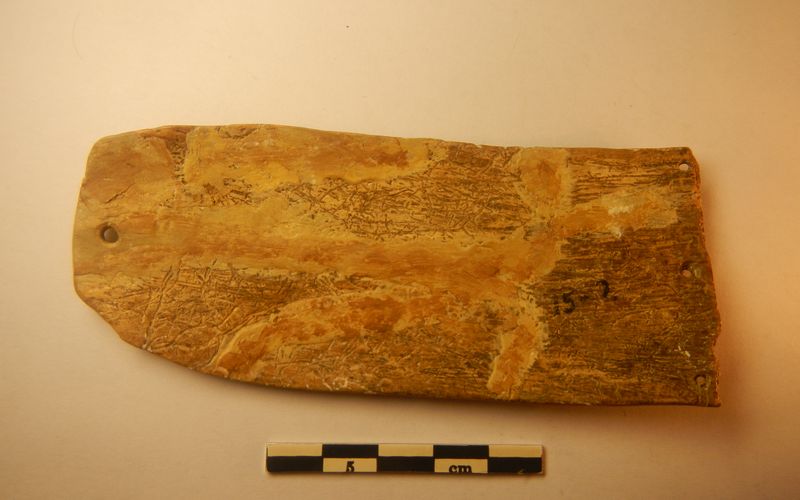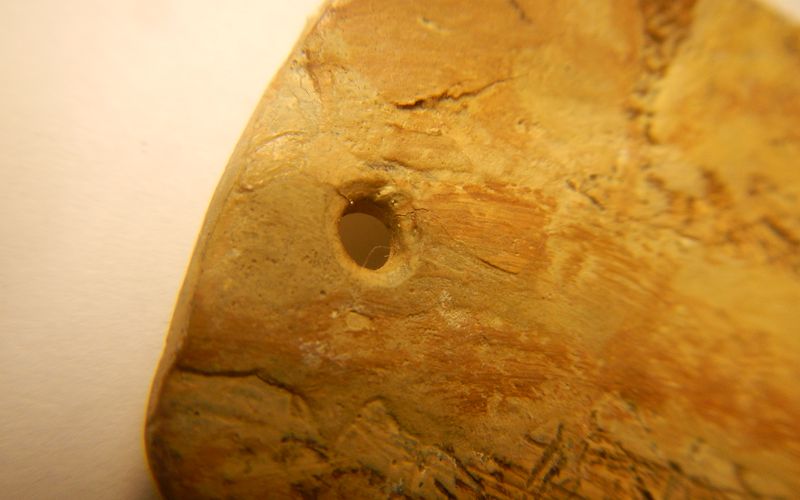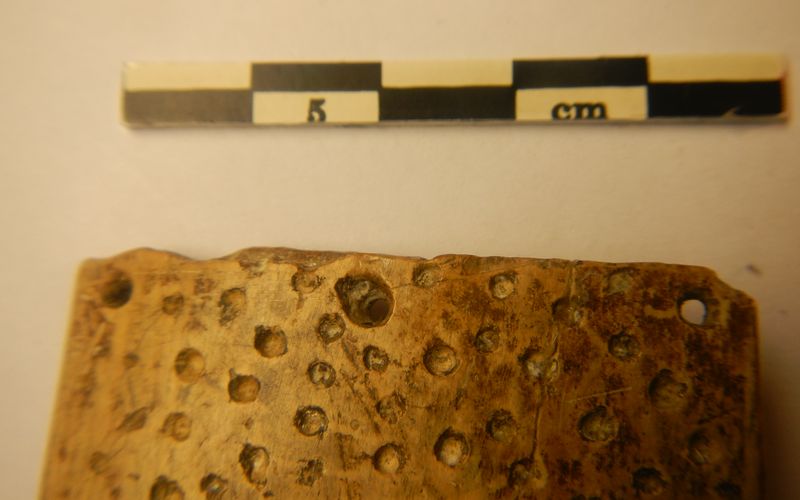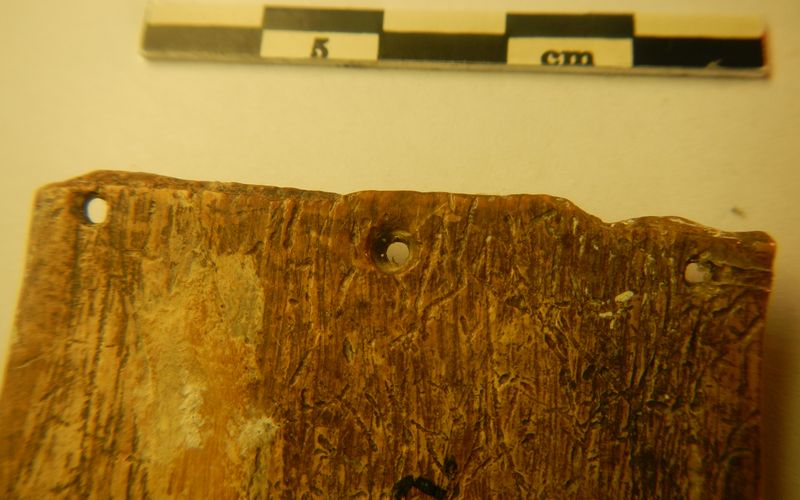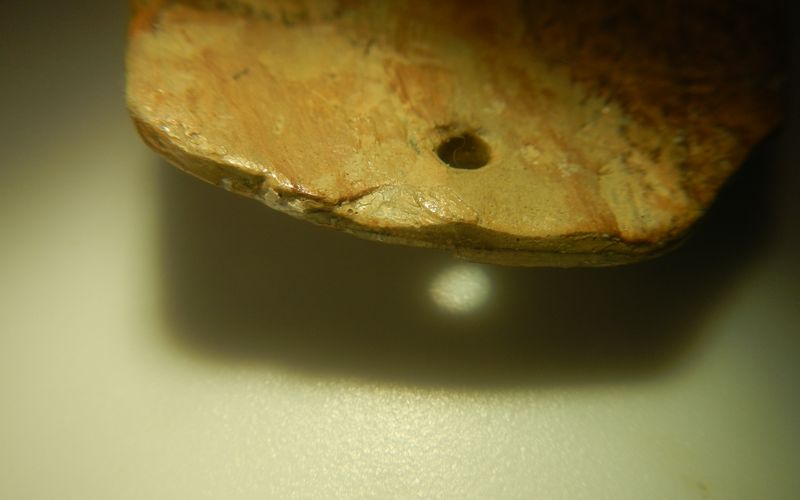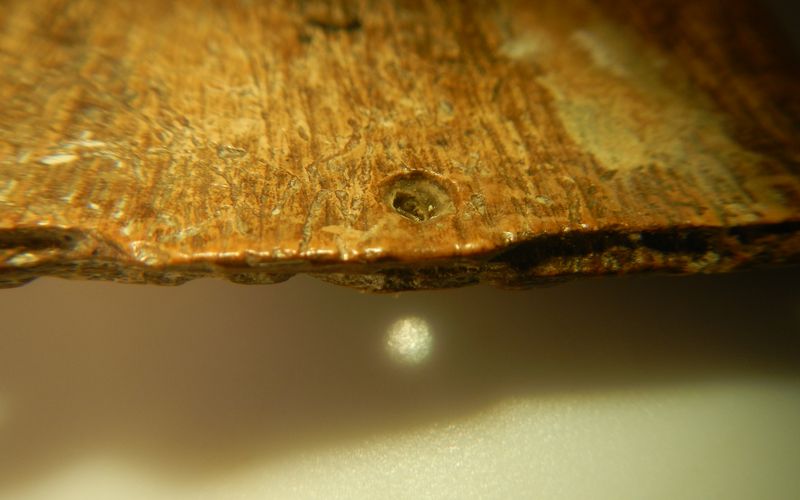A part of a composite diadem
A plate that was a part of a single item in acient times. It is made on a flat ivory blade. Slightly bent. The inner part is scraped, the outer part is covered with a paired "cupulas" ornament . At the ends there are through holes. In the fracture zone there are paired holes matched for sewing. The straight lines ornament, on the one side there is a double line, on the other side there is a triple one. On the outer side cupulas form a triangular edge ornament. A larger area between the indentations decorated with a scattered ornament. The second group of cupules, that is closer to the opposite side with a through hole, forms three parallel diagonal lines (consists of 27 cupulas).
Manufacturing technique
From the inner side the item was probably treated with a burin (?). Traces are overlapped with polishing from both sides. The drilling of the through-holes was made with a reamer from both sides. The ornamentation was made with a reamer ("cupulas"). The drilling of the cupulas is unstable. The cupulas can be with more or less clear edge, but they all were made by one person. There is no punching.
Use-wear traces
The polishing on the convex side is less intensive than on the concave one. The item was probably sewn to the fur. Traces of knitting are not noticed. There are no traces of contact with the other plate on the edges, i.e. the contact was quite hard.
Storage location
The State History MuseumInventory number
1820/15-2Size
Length - 112.58 mm
Width - 46.93 mm
Thickness - 3.49 mm
Material
IvoryDating
19-23 th years BPCulture
Mal'ta-Buret' archaeological cultureThe author of the excavations
Gerasimov M.M.1956
Publications
Gerasimov M.M. Paleoliticheskaya stoyanka Mal'ta // Sov. ehtnografiya, 1958. № 3, S.39-43 (ris.11,g) (in Russ.)
Abramova Z.A. Paleoliticheskoe iskusstvo na territorii SSSR // SAI, vyp. A 4-3. M,- L.: Izd-vo AN SSSR, 1963 –S. 51 (tab. 54) (In Russ.)
